Unless more Australians start making smarter superannuation and investment decisions, many won’t have enough to retire when they imagined or live the type of lifestyle they expected.
The Ready to Retire study from 2017 found that the average Australian worker currently has around $200,000 less than they will need to live comfortably. A lowly 22 percent believe they will have enough superannuation funds upon retirement.
This rather alarming reality is starting to dawn on many people approaching retirement around the country.
One of the key decisions with your superannuation is whether to run your own self-managed super fund (SMSF) – and whether to invest in property through your super.
Most people know that you can use your superannuation to buy property. However, many are sketchy on the details of how to do this with the best chance of safeguarding their futures.
The following tips are designed to help you make the right decision…
1. You can borrow money to purchase property in superannuation
Don’t have enough to buy the investment property you want? Since 2008, superannuation held in a self-managed super fund can be used to borrow money for property purchase.
You can’t borrow the total value of the property – usually it’s up to around 70 percent.
If you have 30 percent of the purchase price in your SMSF, the property can be used as security by the bank and you can take out a ‘limited resource loan’. The SMSF then makes the loan repayments.
If there is a default on the loan, your other assets in the SMSF are generally protected from the standard debt recovery and bankruptcy proceedings. The lender only has recourse to the property itself.
Upon completion of the loan repayment, the property’s ownership can be legally transferred to the SMSF.
2. Follow these 8 steps to set up your SMSF
Setting up an SMSF properly can be a confusing process but there are eight basic steps to follow:
- Select the appropriate structure and name
- Sign the trust deed that covers how your SMSF is set up and run (it can have up to four members)
- Establish a trust for the SMSF by investing assets into the fund
- Register your SMSF with the ATO
- Set up a separate bank account for your fund
- Submit your tax file number (and those of any other trustees)
- Obtain an electronic service address to receive employer contributions into your fund (if applicable)
- Roll over funds from your existing superannuation account into your SMSF
It’s unwise to attempt to set up an SMSF without the assistance of a superannuation advisor. As well as assisting with the initial set up, we can also help you to manage your fund.
3. Keep a liquidity buffer
If you’re buying property in superannuation, make sure that you plan on keeping a liquidity buffer of cash and/or shares.
The banks will check before lending to you and will make sure that you have this buffer in place. It should be at least 10 percent of the value that you’re intending to borrow.
Because superannuation is key to most people’s retirement, the government has carefully regulated what can and can’t be done with it. They don’t want people gambling their superannuation away on poor investments.
4. Use the rental income to repay your loan
You cannot live in the property you purchase until after retirement.
Most people purchase an investment property and use the income generated from renting it out to repay the loan.
This generally makes good financial sense. The key is in selecting a property that is easy to rent out and makes a good rental return. The purchasing criteria may therefore be a little different to buying a home that you live in, particularly in terms of proximity to public transport, amenities, and average rental rates in the local area.
5. Get it right and enjoy many tax efficiencies
Superannuation is attractive for many because of its tax efficiency. This extends to property purchases within superannuation.
You can enjoy the following tax benefits, for instance:
- No capital gains tax after retirement
- If you are sacrificing salary payments, loan repayments are effectively tax deductible
- The maximum rate of tax on income after expenses and any capital gains after selling your property is capped at 15 percent. Standard investors can pay up to 46.5 percent.
6. Follow the same due diligence rules with property in superannuation
It’s really important to do your due diligence and buy your property based on research rather than emotion. Purchasing property is probably the most important financial decision of your life so don’t abandon all the rules just because you’re buying through superannuation.
The same rules apply:
- take the time to visit comparative properties,
- know the values of similar properties in the same area,
- get all the property checks performed by the right professionals,
- shop around for the right home loan, etc.
7. Always get quality professional advice
Nothing comes without risk but you can mitigate the risk.
The key is in understanding what you’re getting yourself into; making informed decisions based upon having the correct data at hand; keeping a diverse superannuation portfolio that doesn’t place all your eggs in one basket; and not underestimating how complex buying property in superannuation can be.
If the above points have made it sound simple, it’s not. Get the right professional advice from the start. We can guide you here. This will ensure that you make the best possible decisions for your future.
If selected according to normal rigorous property-purchasing criteria, property can be an excellent way to boost superannuation and increase your chances of building a retirement fund to support your desired lifestyle.
The earlier you make the move, the longer you have to take advantage of the many benefits of property investment and the less stressful your later years become.
If you need assistance with setting up or managing your SMSF, or help with organising a property purchase through your fund, please contact us.

